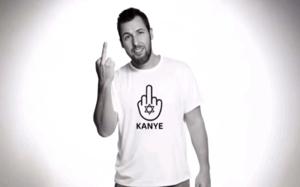Kanye West, a visionary artist whose influence extends beyond music and into fashion, has redefined the concept of merchandise. Through a series of meticulously curated and culture-shifting drops, Kanye has turned merch into a statement—combining streetwear aesthetics with art, politics, and innovation. This article explores the complete history of Kanye West’s merch drops, dissecting their evolution, cultural impact, and legacy in the world of fashion.
The Birth of Kanye’s Merch: The Early Years (2004–2012)
Kanye West’s foray into merchandise began modestly. During the College Dropout era, fans could find limited-run T-shirts sold at concerts—featuring artwork inspired by his debut album. kanye west merch These early pieces were less fashion-forward and more promotional, yet they laid the foundation for what was to come.
By the time of graduation (2007), Kanye began experimenting with bolder, more colorful designs. Collaborations with Takashi Murakami for album art translated into some of the earliest pieces that blended street art with streetwear. However, it wasn’t until Watch the Throne (2011) and the Glow in the Dark Tour that Kanye’s merch started generating massive demand, with exclusive items sold only at live shows.
The Yeezus Tour Merch Phenomenon (2013)
The Yeezus Tour marked a pivotal moment in Kanye’s merch history. Partnering with artist Wes Lang, the designs featured gothic, rebellious iconography—grim reapers, skeletons, and Confederate flags—conveying raw energy that matched the controversial tone of the Yeezus album.
These pieces were a turning point. No longer just souvenirs, Yeezus merch became must-have fashion items, resold on secondary markets for hundreds of dollars. Kanye’s use of vintage metal band aesthetics and distressed streetwear silhouettes would soon inspire major fashion brands and countless artists to follow suit.
The Pablo Era: A Global Streetwear Movement (2016)
Perhaps no merch drop in Kanye’s career is as iconic as the Life of Pablo merchandise. Kanye changed the game by launching pop-up shops around the world, including cities like New York, Los Angeles, Paris, London, and Tokyo.
Designed by Cali Thornhill DeWitt, the Pablo merch featured gothic fonts, oversized silhouettes, and minimalist colors. Fans lined up for hours, and the limited nature of these drops sparked immense hype. The phrase “I Feel Like Pablo” became a cultural meme, while the Pablo merch helped pioneer the luxury pop-up retail trend that is now standard for fashion brands.
Each location featured exclusive colorways and city-specific designs, making the merch collectible. This era proved Kanye’s ability to blend music, fashion, and retail strategy into a seamless experience that resonated globally.
Kids See Ghosts and Ye: Art-Driven Concepts (2018)
Following a quieter period, Kanye re-emerged with more niche, art-focused merch drops in 2018. The Kids See Ghosts collaboration with Kid Cudi was accompanied by colorful, surreal visuals by Japanese artist Takashi Murakami, aligning merch with high art.
Simultaneously, for his solo album Ye, Kanye released merch featuring Wyoming landscapes, biblical quotes, and lo-fi aesthetics. The designs were more subdued but continued the trend of aligning visuals with sonic themes. These releases were primarily online, reinforcing Kanye’s understanding of direct-to-consumer digital merchandising.
Sunday Service: Faith and Fashion (2019–2020)
The launch of Sunday Service marked a new direction in Kanye’s merch journey. Blending spiritual motifs with minimalist design, this era’s pieces included slogans like “Holy Spirit,” “Trust God,” and “Jesus Is King” printed on oversized crewnecks, sweatpants, and T-shirts.
Sunday Service pop-ups were held at Coachella and other public gatherings, with attendees able to purchase exclusive, site-specific merch. The Jesus Is King album release also saw capsule collections, including blue-and-gold garments and vinyl records.
These drops illustrated how Kanye used fashion to evangelize through style, positioning merch as a wearable extension of his spiritual message.
Presidential Campaign Merch: Politics Meets Streetwear (2020)
In one of the more polarizing moves, Kanye launched 2020 Vision merch during his short-lived presidential campaign. Items included hats, hoodies, and shirts emblazoned with “Kanye 2020,” the American flag, and retro-political design cues.
Although not received with the same fanfare as his music-related collections, the campaign merch solidified Kanye’s desire to fuse political commentary with fashion, reflecting his ever-evolving identity and controversial public persona.
Donda Drops and Tech-Infused Merch (2021–2022)
The Donda era introduced a darker, more experimental aesthetic. Merchandise for the album was sold during massive listening events in stadiums across the U.S., often limited to on-site purchases, making each item more exclusive.
Items included tactical vests, minimalistic balaclavas, and blank black shirts—mirroring the dystopian themes of Donda. One notable aspect was Kanye’s collaboration with Balenciaga for engineered pieces that blurred the lines between luxury couture and concert merch.
In addition to physical merch, Kanye explored tech through the Donda Stem Player, a customizable music device allowing fans to remix album tracks—adding a new layer of interactive merchandising.
Yeezy x Gap: Mainstream Merch Reinvented (2021–2023)
Kanye’s collaboration with Gap revolutionized accessible merchandise. While technically not traditional “concert merch,” the Yeezy x Gap line continued the ethos of Kanye’s drops: limited availability, minimalist aesthetics, and high resale value.
Key pieces included the round jacket, perfect hoodie, and Balenciaga-engineered outerwear. These items sold out instantly, despite sparse promotion and minimalist product reveals, reinforcing Kanye’s reputation for demand-driven scarcity.
The Legacy and Influence of Kanye’s Merch Drops
Kanye West’s merch history has fundamentally altered how we perceive artist-related fashion. No longer simple memorabilia, his drops have:
-
Influenced streetwear giants like Supreme and Off-White.
-
Paved the way for merch as a fashion category in its own right.
-
Demonstrated the power of limited drops and experiential retail.
-
Elevated artistic storytelling through apparel.
From religious symbolism to political disruption, each era of Kanye's merch has told a story, making his wardrobe releases just as impactful as his music.
Final Thoughts
Kanye West didn’t just sell merch—he reinvented the art of selling identity. Through design, exclusivity, storytelling, and cultural commentary, he transformed a niche into a multi-billion-dollar phenomenon. Today, artists, brands, and designers study his approach to merchandise as a blueprint for modern fashion marketing.



